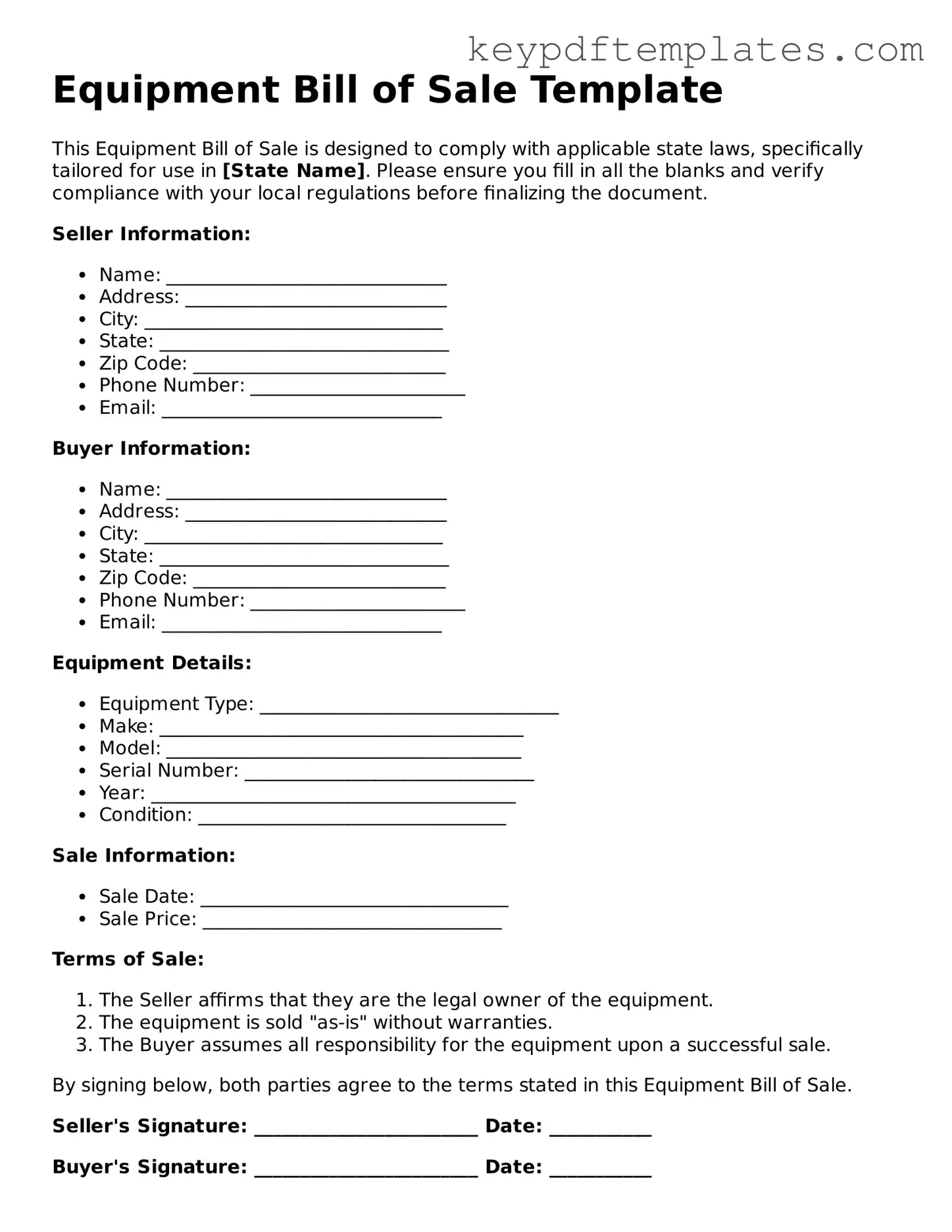Printable Equipment Bill of Sale Template
The Equipment Bill of Sale form serves as a legal document that records the transfer of ownership of equipment from a seller to a buyer. This form outlines essential details such as the description of the equipment, the sale price, and the date of the transaction. Utilizing this form helps protect both parties by providing clear evidence of the sale and its terms.
Modify Document Online
